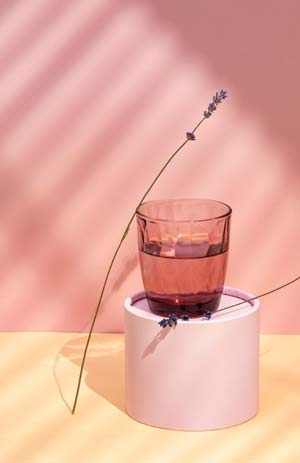When it comes to showcasing products with style and professionalism, few elements are as powerful as reflections and Shadows in Product Photography. Shadows bring dimension, helping the viewer understand the shape, size, and texture of an item, while reflections can add a sleek, premium feel that instantly elevates a brand’s image. These subtle details do much more than make a photo look attractive—they establish trust with potential buyers by presenting products in a realistic yet polished way.
A well-placed shadow can suggest weight and grounding, preventing the product from appearing flat or disconnected from its environment. Similarly, reflections can communicate sophistication, making materials like glass, metal, or polished surfaces appear more luxurious. Together, they turn a simple catalogue shot into a powerful marketing asset that captures attention and conveys quality.
However, achieving this balance is not accidental—it requires both technical knowledge and artistic vision. From controlling light direction and intensity to understanding how different materials react to illumination, mastering Shadows in Product Photography means combining science with creativity. The best photographers know how to manipulate these elements to tell a visual story that resonates with customers and reinforces brand identity.
Why Shadows and Reflections Matter
 Shadows in Product Photography do more than ground an object—they act as a visual storyteller. The way a shadow falls can significantly influence how a product is perceived, shaping the viewer’s mood and emotional response. A soft, diffused shadow creates a sense of elegance and natural beauty, often used for products like cosmetics, jewellery, or lifestyle items where subtlety enhances desirability. On the other hand, a sharp, well-defined shadow can communicate power, durability, and boldness—qualities often emphasised in athletic gear, technology products, or tools. By deliberately adjusting the shadow’s intensity, direction, and softness, photographers can highlight specific attributes of the product and guide the viewer’s perception.
Shadows in Product Photography do more than ground an object—they act as a visual storyteller. The way a shadow falls can significantly influence how a product is perceived, shaping the viewer’s mood and emotional response. A soft, diffused shadow creates a sense of elegance and natural beauty, often used for products like cosmetics, jewellery, or lifestyle items where subtlety enhances desirability. On the other hand, a sharp, well-defined shadow can communicate power, durability, and boldness—qualities often emphasised in athletic gear, technology products, or tools. By deliberately adjusting the shadow’s intensity, direction, and softness, photographers can highlight specific attributes of the product and guide the viewer’s perception.
Reflections serve as the perfect complement to shadows, adding depth and a premium aesthetic. A controlled reflection can give glassware, electronics, or luxury goods a sleek, polished finish, instantly making them look more refined and high-end. For example, photographing a watch on a glossy black surface with a subtle reflection can enhance its sophistication, while keeping the product as the clear focal point. When shadows and reflections are used together effectively, they not only make the product appear realistic and balanced but also elevate its overall appeal, building trust with potential buyers and enhancing the brand’s image.
Types of Shadows in Product Photography
- Natural Shadows – Created by direct light sources, these shadows replicate how we see objects in real life. They are excellent for lifestyle product shoots.
- Drop Shadows – Often added during editing, drop shadows make the product appear as if it’s hovering slightly above the background.
- Cast Shadows – These are stronger, more dramatic shadows that add depth and personality to the image.
- Softbox Shadows – Achieved with diffused light, they result in soft and subtle effects, perfect for beauty and fashion products.
Each type of Shadows in Product Photography serves a different purpose, so knowing when and how to apply them is key.
How to Control Reflections and Shadows
Mastering Shadows in Product Photography requires a careful balance of light positioning and surface choice.
- Use diffusers and reflectors to soften harsh shadows.
A diffuser, such as a softbox, white sheet, or translucent panel, helps spread light evenly and eliminates overly harsh lines. Reflectors, on the other hand, bounce light back onto the product, filling in unwanted dark areas and creating a more balanced look. Together, these tools allow you to control the mood of the image and ensure Shadows in Product Photography enhance rather than overpower the subject. - Experiment with angles—minor adjustments can create significant differences.
Moving your light source just a few inches higher, lower, or sideways can dramatically alter the length, direction, and intensity of shadows. For example, placing the light above and slightly behind a product creates dramatic, elongated shadows, while frontal lighting produces softer, more subtle effects. This trial-and-error approach helps you discover the most flattering angle for each specific product. - Choose your background wisely.
The surface beneath and behind your product has a significant impact on both shadows and reflections. Glossy or reflective surfaces (like black acrylic, glass, or polished stone) will create mirror-like reflections that can make a product look premium. Matte surfaces, such as paper or fabric, absorb light, reducing reflections and producing softer shadows that keep the product as the focal point. - Mind the product’s shape and material.
Different materials react to light in unique ways. Glass and other transparent items often require backlighting and careful reflection control, while shiny metals reflect everything around them—including the photographer—requiring strategic placement of light and diffusers. Matte or textured products absorb light more easily, creating softer shadows. Understanding the product’s physical characteristics helps you decide how best to highlight it with the right shadow and reflection balance.
Post-Processing Enhancements
Even with the best studio setup, retouching is often an essential step in the workflow. Lighting can be unpredictable, and products with reflective or textured surfaces may create shadows that look uneven or distracting. Post-processing allows you to fine-tune these details with precision. Using editing tools like Photoshop or Lightroom, you can refine Shadows in Product Photography by adjusting their opacity to make them lighter, adding blur to soften hard edges, or increasing intensity to make the product look more grounded and realistic.
In some cases, it’s beneficial to create artificial shadows digitally, especially when shooting products for e-commerce platforms where a uniform look across all images is crucial. By generating clean, consistent shadows, you can ensure every product in your catalogue looks cohesive, regardless of when or how it was photographed. This attention to detail not only improves visual quality but also strengthens brand identity by presenting a polished and professional image to customers.
Common Mistakes to Avoid
- Overpowering the product with heavy shadows.
- Using reflections that distract rather than enhance.
- Ignoring the importance of uniform Shadows in Product Photography when shooting a collection.
A well-crafted shadow should never steal attention—it should guide the eye back to the product.
Final Thoughts
The art of mastering reflections and Shadows in Product Photography lies in precision and creativity. With the proper lighting, background, and post-processing, you can produce images that are both realistic and captivating. By understanding the role shadows play in storytelling, you elevate your work from simple product shots to powerful marketing tools.
Whether you’re shooting for e-commerce, print, or social media, consistent use of Shadows in Product Photography will set your images apart, giving your brand the polished and professional look it deserves.
See how Mallorca Graphics can help you









0 Comments